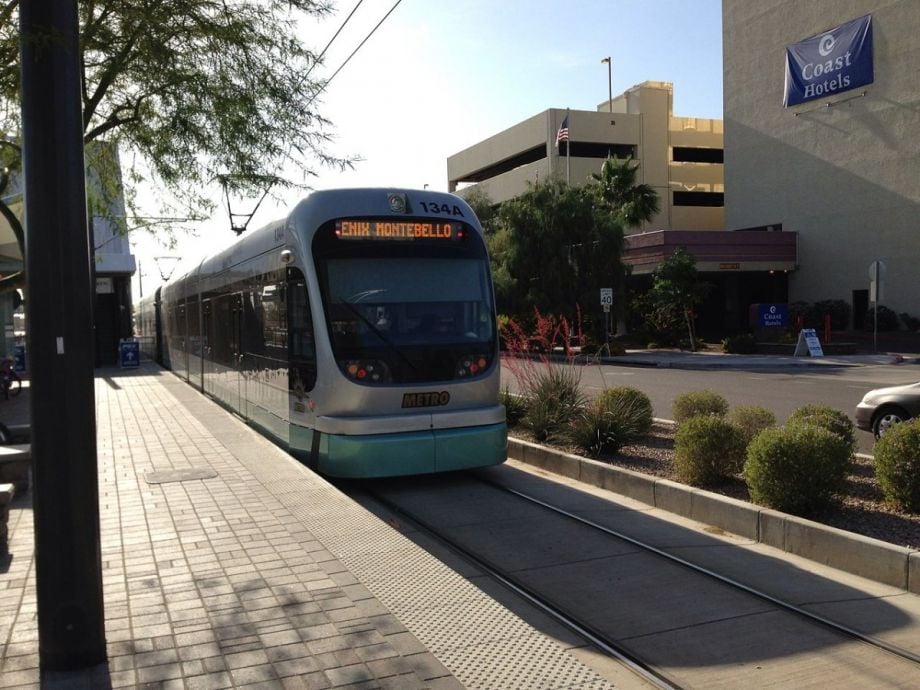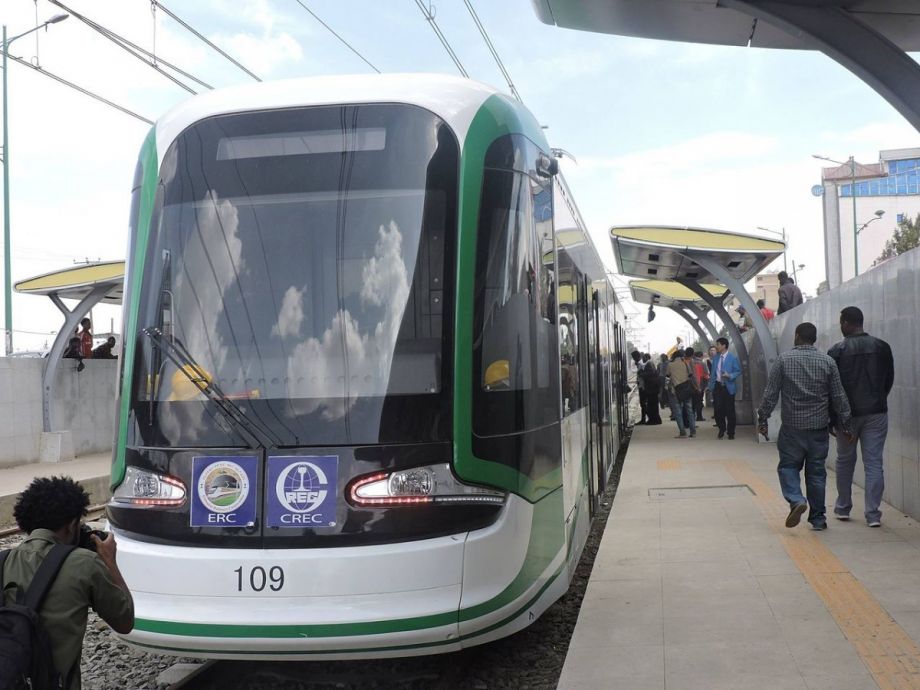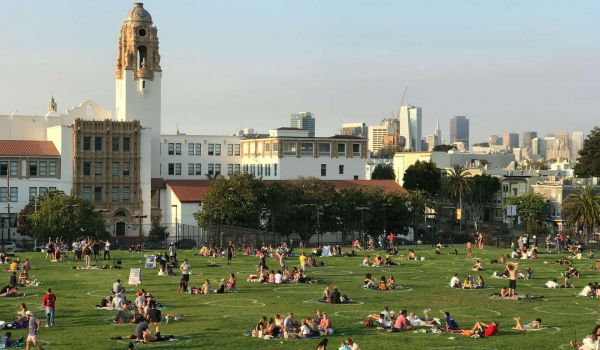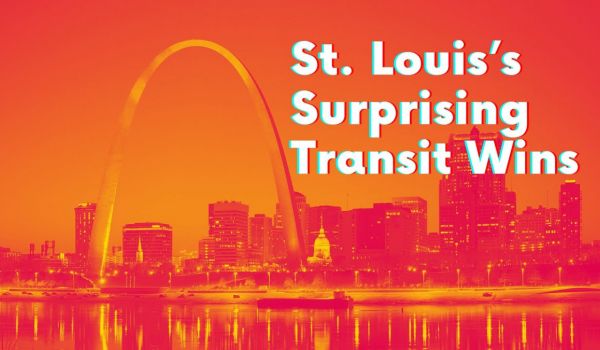Our weekly “New Starts” roundup of new and newsworthy transportation projects worldwide.
Light Rail Arrives in Sub-Saharan Africa
The first light-rail transit line in sub-Saharan Africa opened on Sunday, bringing curious Ethiopians out in droves to line up for a ride on the Addis Metro in the capital city of Addis Ababa.
The Mail & Guardian Africa reports that the two-line Addis Metro light-rail system is capable of carrying 15,000 people per hour in each direction, giving it a total carrying capacity of 60,000 passengers per hour. Work on the 32-km (20-mile) system was finished in January, and from then until Sunday, the lines were being tested to iron out performance, safety and right-of-way issues.
The $474 million project was built by the China Railway Group Limited after the Ethiopian government received 85 percent of the line’s financing from the Export-Import Bank of China. The Chinese are also training the drivers and maintenance staff as well as maintaining the power supply system, which has its own dedicated grid to ensure reliability.
According to the article, the north-south Blue Line (the trams are color-coded) is now in service from 6 a.m. to 10 p.m. daily. The east-west Green Line will enter revenue service in October. Fares, which the article says reflect heavy subsidies, are based on distance; the highest fare charged is 50 cents.
The Addis Metro is just one of several large infrastructure projects being pursued by the Ethiopian government, which has opened its state-run economy to foreign investment and trade from Asia, Europe and the United States. Its projected growth rate of 8.6 percent for the current fiscal year is the second-highest on the African continent.

Phoenix Metro light rail (Photo by DearEdward)
Activist Seeks to Lure Scottsdale With Light Rail
In sharp contrast to Mesa, which recently welcomed a Valley Metro light-rail extension into its downtown with open arms, the upscale northeastern Phoenix suburb of Scottsdale has steadfastly resisted any such projects, saying they would increase traffic congestion on its busy main street, Scottsdale Road.
Now that Phoenix-area voters have approved a sales tax increase to pay for more light-rail extensions, one local activist has set his sights on bringing the Phoenix Metro right up to Scottsdale’s doorstep.
A story in the Phoenix Business Journal says that local activist and Arizona State University alumnus Sanjeev Ramchandra is now pushing for a Metro extension through Papago Park in northeast Phoenix that would serve the city’s municipal stadium, zoo and botanical garden, ending just shy of the Scottsdale line at Galvin Parkway and McDowell Road.
Ramchandra, who first made headlines in Phoenix with a campaign to get his alma mater to spin two of its four Phoenix-area campuses off from the Tempe mothership, says that extending light rail to Scottsdale would be a boon for tourists and visitors headed for Scottsdale’s downtown and Old Town, with their many dining and entertainment options. His vision would extend the Papago Park line along McDowell Road to Scottsdale Road, where it would serve ASU’s SkySong Center, a high-tech innovation hub, then turn north to follow Scottsdale Road into downtown.
Ramchandra hasn’t produced any cost estimates for his alternate route to Scottsdale, which would also connect the ASU main campus in Tempe with Old Town and downtown. Scottsdale officials to date have opposed any light-rail extension up Scottsdale Road; according to the story, such an extension would take away two to three traffic lanes along the busy thoroughfare. On top of that, Scottsdale would have to come up with its own funds to pay for any light-rail line running through the city.
Scottsdale is currently in the midst of developing a new transportation master plan for review and public discussion next year. It could include light rail in the mix of recommendations, or it could leave it out. Ramchandra has made it clear what he would like to see; then again, as the article states, he is used to tilting at windmills.
New Portland Bridge Makes Headlines
Portland’s fifth MAX light-rail transit line opened September 12th to much fanfare. The Orange Line, which connects downtown Portland with Milwaukie and Oak Grove, on the east bank of the Willamette River in Clackamas County, promises to deliver riders from Milwaukie to downtown in 27 minutes.
Part of the fanfare was owed to the Oregon city’s new bragging rights: The Orange Line crosses the first new bridge over the Willamette since 1973 — and the first of its kind anywhere in the United States. Tilikum Crossing is a 1,720-foot-long cable-stayed span that carries light-rail trains, streetcars, buses, bicycles and pedestrians across the river.
Portland’s mass transit agency, TriMet, touts a number of other goals it achieved in the construction of the Orange Line, including incorporation of green infrastructure, intergovernmental cooperation and inclusion of women and minorities in the line’s construction.
Though the public helped to name the bridge (a nod to the region’s Native American heritage), since the opening, one local man has paid for billboards that encourage a rebranding to “Jean Luc Picard Wunder Crossing.”
Know of a project that should be featured in this column? Send a Tweet with links to @MarketStEl using the hashtag #newstarts.
The Works is made possible with the support of the Surdna Foundation.

Next City contributor Sandy Smith is the home and real estate editor at Philadelphia magazine. Over the years, his work has appeared in Hidden City Philadelphia, the Philadelphia Inquirer and other local and regional publications. His interest in cities stretches back to his youth in Kansas City, and his career in journalism and media relations extends back that far as well.
Follow Sandy .(JavaScript must be enabled to view this email address)











